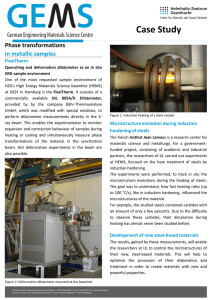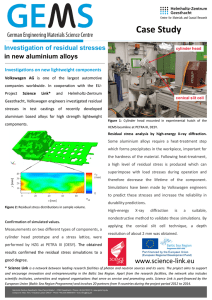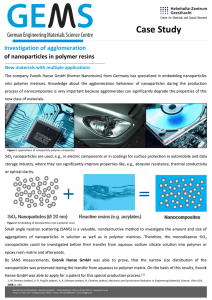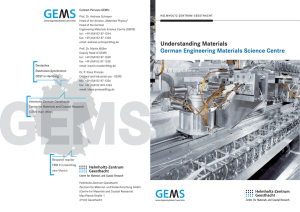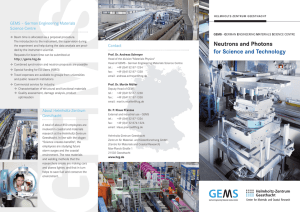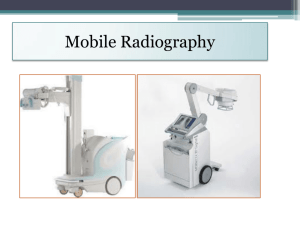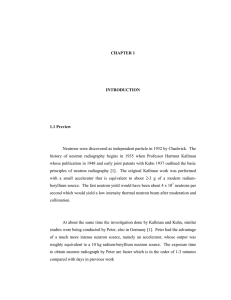Case Study Neutron radiography of Ariane 5 rocket components
advertisement
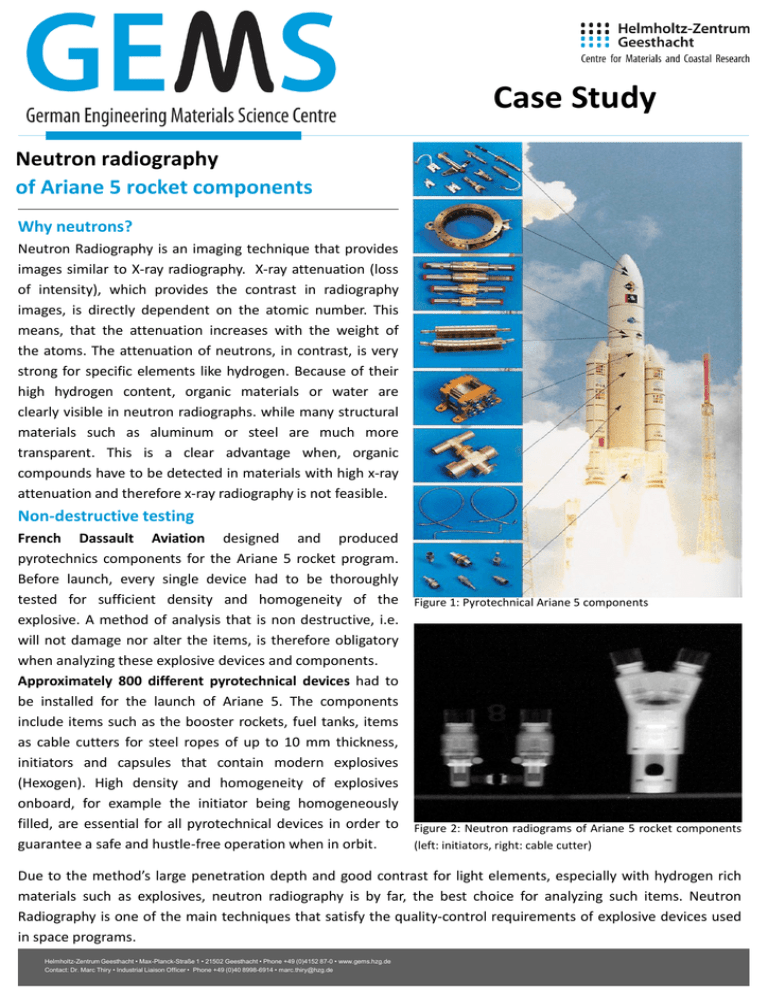
Case Study Neutron radiography of Ariane 5 rocket components Why neutrons? Neutron Radiography is an imaging technique that provides images similar to X-ray radiography. X-ray attenuation (loss of intensity), which provides the contrast in radiography images, is directly dependent on the atomic number. This means, that the attenuation increases with the weight of the atoms. The attenuation of neutrons, in contrast, is very strong for specific elements like hydrogen. Because of their high hydrogen content, organic materials or water are clearly visible in neutron radiographs. while many structural materials such as aluminum or steel are much more transparent. This is a clear advantage when, organic compounds have to be detected in materials with high x-ray attenuation and therefore x-ray radiography is not feasible. Non-destructive testing French Dassault Aviation designed and produced pyrotechnics components for the Ariane 5 rocket program. Before launch, every single device had to be thoroughly tested for sufficient density and homogeneity of the Figure 1: Pyrotechnical Ariane 5 components explosive. A method of analysis that is non destructive, i.e. will not damage nor alter the items, is therefore obligatory when analyzing these explosive devices and components. Approximately 800 different pyrotechnical devices had to be installed for the launch of Ariane 5. The components include items such as the booster rockets, fuel tanks, items as cable cutters for steel ropes of up to 10 mm thickness, initiators and capsules that contain modern explosives (Hexogen). High density and homogeneity of explosives onboard, for example the initiator being homogeneously filled, are essential for all pyrotechnical devices in order to Figure 2: Neutron radiograms of Ariane 5 rocket components guarantee a safe and hustle-free operation when in orbit. (left: initiators, right: cable cutter) Due to the method’s large penetration depth and good contrast for light elements, especially with hydrogen rich materials such as explosives, neutron radiography is by far, the best choice for analyzing such items. Neutron Radiography is one of the main techniques that satisfy the quality-control requirements of explosive devices used in space programs. Helmholtz-Zentrum Geesthacht • Max-Planck-Straße 1 • 21502 Geesthacht • Phone +49 (0)4152 87-0 • www.gems.hzg.de Contact: Dr. Marc Thiry • Industrial Liaison Officer • Phone +49 (0)40 8998-6914 • marc.thiry@hzg.de Solving materials problems With X-rays or neutrons The German Engineering Materials Science Centre (GEMS) is a central user access platform, where the Helmholtz-Zentrum Geesthacht provides a worldwide unique infrastructure for complementary research with photons and neutrons. Instruments using synchrotron radiation are operated at the outstation at DESY in Hamburg, instruments using neutrons are located at the outstation at the FRM II Garching, near Munich. Figure 3: PETRA III experimental hall at DESY, Hamburg Figure 4: Experimental hall at FRM II in Garching, near Munich GEMS provides you with state of the art Industry specific user support: materials analysis well beyond the capabilities Materials science support labs of standard laboratory equipment: 3-D imaging (radiography, tomography) Residual stress measurements Analysis of phase transformations Characterisation of nanostructured hard and soft matter samples (sample preparation and characterisation) data analysis, secrecy agreements In situ sample Environments: • Furnaces • Cooling devices • Stress rigs • Dilatometer • Laser and friction stir welding devices Helmholtz-Zentrum Geesthacht • Max-Planck-Straße 1 • 21502 Geesthacht • Phone +49 (0)4152 87-0 • www.gems.hzg.de Contact: Dr. Marc Thiry • Industrial Liaison Officer • Phone +49 (0)40 8998-6914 • marc.thiry@hzg.de
